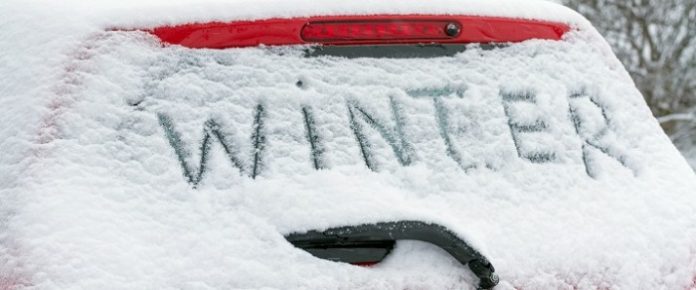Throughout the year, there are two fundamental points in which it is crucial to check the car. Take special measures to enjoy the greatest possible safety behind the wheel: the start of a long trip in summer and winter. Let’s discover how to prepare your car for winter.
In this case, both the annual review or the 10,000 km and the ITV have left aside due to its nature with following a series of guidelines. So, you can be protected and safe in the car.
Looking ahead to the summer, it is convenient to have passed the annual inspection to have properly inflated the tires and checked both the oil and the levels in an accurate manner.
How to prepare your car for winter?
In winter, the canvas changes radically, and that implies that the focus should be placed on many more details, in addition to being especially more cautious in any adverse situation, such as very heavy rain or getting caught in a Nevada.
That is why, in addition to following safety guidelines, it is essential to have other additives: always have water and food, and include a car charger in the glove compartment.
It is also advisable to have a blanket, or several, at hand to combat the cold of the night. To this is added the task of storing a cloth rag or cloth of a striking color so that rescue teams can distinguish the car if necessary.
In addition to these precautions, it is convenient that in the event of bad weather, you never travel with less than half a tank of gasoline on long journeys.
Checklist
Also, adapting the way of driving at the same time, leaving the lights on also during the day or increasing the safety distance. Especially when it rains since it increases the braking time on an asphalt already cold in itself, it will mean the difference between leaving unharmed or not of a mishap.
Beyond these tips for a long trip, whether for business or family commitment, the following considerations are imperative, so follow them closely during the winter months, even before you start your cold, can make a difference on the road.
Winter tires or review of existing ones
It is the only element that connects the car with the asphalt, so they bear most of the responsibility of keeping you safe. The rain is one of the worst enemies for them, next to the ice, and therefore the low temperatures.
Beyond the fact that it seems a myth that only applies to Formula 1 the rubber’s physics of conventional tires causes it to lose grip at low temperatures. That is why in Nordic countries, winter tires are much more common to see than chains.
And they are the most effective below 10 degrees Celsius since above that temperature they degrade very quickly. The acronyms can distinguish them M + S inscribed in them.
In case of not replacing them with winter ones, maintaining the tires, controlling the pressure and keeping both the drawing of the tires (always greater than 3mm) and the possible cracks at bay is essential for the driver’s road safety as well as the rest that cross your path.
Check wheel condition
First of all, it is necessary to distinguish what a wheel is and what a tire is. The wheel is the entire tire and tire assembly, while the latter is the rubber with which a car rolls on the asphalt.
To check it, the first thing is to look at the bezel. It is well secured and without the possibility of cracking the tire. After that, it is time to check the rubber: the grooves must exceed 1.6 millimeters deep. The pressure of each tire must be according to what is indicated on the chassis by the manufacturer.
Just look at the table arranged in one of the doors and check at a gas station that the pressure adjusts to the scales, usually over 2.0 bars.
In case of wear, they must be replaced two by two, always coinciding with the same axle (front and rear), never only on one side of the car. The change can be around 60-90 euros per unit, usually.
This depends on the brand you ride, from the cheapest to the most expensive and resistant, such as Michelin. Of course, look at the date of these before leaving the workshop and have no signs of wear.
Also, remember that a tire after the fourth year of life begins to harden even if little is used. This means that it suffers a kind of crystallization that causes it to stop gripping and consequently has an effect similar to skating on water.
As for aquaplaning, regardless of riding a new, winter or old tire, it is prudent to reduce speed whenever it is not possible to avoid water accumulation.
Car winter chains
Winter chains are a mandatory element unless you have winter tires. When making a trip through the mountain or snowy areas with not very high levels, it is necessary not only to take them but to know how they should be put correctly.
Check antifreeze, windshield wiper and brushes
Check that we have an adequate level of this will cause the radiator water does not freeze. Prevent starting the car. You can also mix both elements and a little soap so that the mixture does not freeze and allows you to clean the rear moon and the front of the car.
As for the brushes, if they are not kept in good condition, they prevent seeing the road correctly and increases the risk of an accident. If they leave a trace of water, it is time to replace them. The price depends on the type and whether you choose universal ones or the brand of the vehicle.
Tweezers and battery: charge and level
Winter affects the batteries. It is very important to avoid discharging. Normally it is reviewed from the third year. That is why the tweezers become an integral element of the battery, even if you find yourself in need of calling the crane.
Engine oil
Checking the oil level and opting for a low viscosity one if you live in low-temperature areas is all you have to take into account so that the engine is lubricated in the usual way.
Shock absorbers
Although they are the great forgotten until it is necessary to change them, the way to make sure if they are in optimal conditions is if by sitting on the hood, they recover the position diligently.
Lights
In addition to carrying spare lights in case any headlight stays dark, all must be ready, even fog, since fog or heavy rain are weather conditions that are often seen during winter. Of course, wearing clean and polished headlights will make other drivers see you better, and you see better. They can be polished with toothpaste and a brush. Simply rub to restore their original transparency.
Brakes
Both brake fluid and discs must be in perfect condition to cope with rain and ice, which multiply their effort. It is best to anticipate its use through long marches, forecasting and avoiding sudden reactions.
First aid kit and scraper
Essential in case you get stuck in the car or suffer an accident. Bandages, gauze, alcohol to disinfect. All help is welcome besides blankets and a mobile charger. It is also advisable to include an ice remover or scraper, preferably plastic to remove snow and ice that adheres to the moons.
If you find yourself in an adverse situation, remember to remain calm, renew the air from time to time, avoid falling asleep. Especially if you have the heating on, and stay in the vehicle while tuning the radio to be aware of Weather forecasts.



